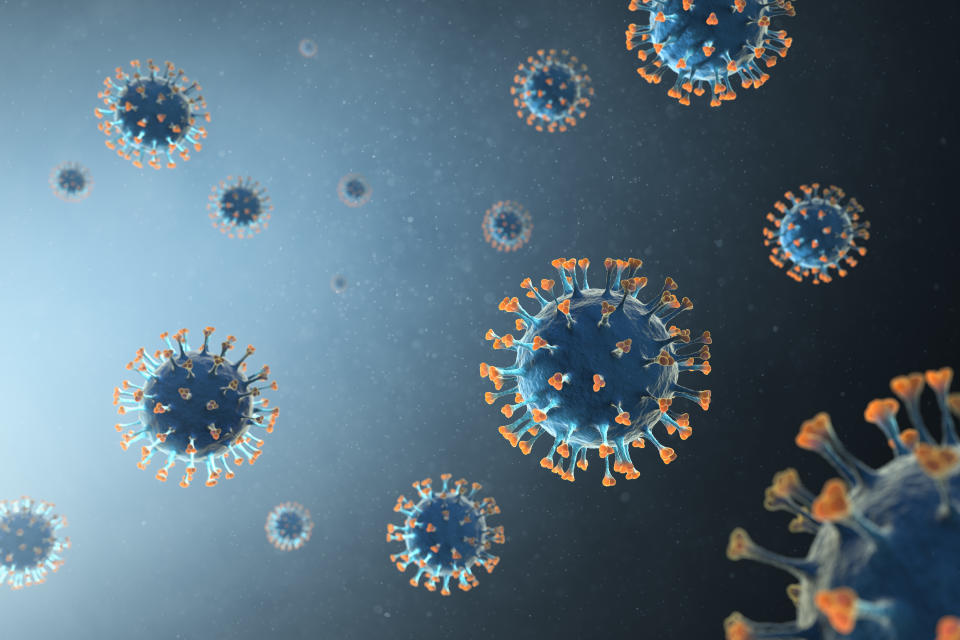Man with coronavirus develops testicular swelling in unusual complication

An otherwise healthy man developed testicular swelling while fighting off the coronavirus, research has revealed.
The unnamed 37-year-old went to hospital in San Antonio, Texas, complaining of discomfort around his genitals, as well as fatigue, a cough and muscle pain. He had tested positive for the coronavirus 15 days earlier.
Otherwise in good health, the man received a course of oral and intravenous (IV) drugs, before being discharged two days later with “mildly improved testicular pain”.
Read more: Britons struggled to maintain their weight during lockdown
Coronavirus complications are increasingly coming to light with the infection being linked to everything from chronic fatigue and hearing loss to post-traumatic stress disorder and even type 1 diabetes in children.
Although “several genitourinary complications have been reported”, testicular inflammation has only ever been noted among children. These youngsters typically had other strains of the coronavirus class, like severe acute respiratory syndrome (Sars) or Middle East respiratory syndrome (Mers).
It is unclear whether the man’s fertility has been affected by the ordeal, however, the San Antonio medics noted “sperm function can be compromised” by testicular swelling.

Most of the genital-related complications arising with the coronavirus are linked to increased blood clotting, which can trigger a prolonged erection, the San Antonio medics wrote in The American Journal of Emergency Medicine.
Testicular inflammation is typically the result of sexually-transmitted infections (STIs) or bacteria invading the urinary tract.
Read more: Pregnant women less likely to develop fever with coronavirus
Mumps is the most common virus to cause the complication, affecting one in five (20%) infected boys.
There has been one reported case of a healthy 14-year-old developing testicular swelling while carrying the coronavirus, however, a different part of his genitals were affected than the San Antonio man’s.
Testicles express receptor used by coronavirus to enter cells
The man arrived at the San Antonio Uniformed Services Health Education Consortium after developing the coronavirus’ tell-tale fever and cough 10 days earlier.
His testicular pain only came on three days before he sought care.
The man had tested positive for the coronavirus at an outpatient clinic 15 days before he arrived at hospital.
Read more: Coronavirus spread on flight after passenger used the toilet
Tests revealed his blood pressure and heart rate were normal, however, his temperature was raised at 38.2C (100.8F) and he produced a mild rattling sound when breathing.
After testing negative in several STI swabs, a testicular ultrasound suggested increased blood flow to his genitals, which often occurs alongside inflammation.
The man was given paracetamol, as well as oral and IV antibiotics, before being discharged. Antibiotics are ineffective against viruses but may relieve any secondary bacterial infection.
The San Antonio medics noted this was a “rare complication”.
Although unclear exactly how it came about, Leydig cells – which produce testosterone – express the ACE2 receptor, which the coronavirus uses to enter cells.
In April, a team from the Montefiore Medical Center in New York found the testicles were “one of the highest sites of [ACE2 receptor] expression”, whereas “very little expression” was detected in ovarian tissue.
They suggested this may be why why more males are dying with the infection, which other experts dismissed as “theoretical” and a “far from sufficient” explanation.
Semen samples collected in other studies have implied infected men have “impaired sperm quality”, which could have a “future impact on male fertility”, wrote the San Antonio team.
Scientists from Nanjing Medical University in China, however, found no trace of the virus in semen samples supplied by 12 men who survived the coronavirus and one who died.
The San Antonio medics noted men infected with other strains of the coronavirus class have suffered “destruction” of the tubes where sperm is produced, as well as a low sperm count or even none at all, they added.
The medics noted this unique case study “may potentially follow suit”.
They recorded the man’s plight in the hope “identification of infrequent genitourinary effects may help emergency physicians identify this disease at the earliest junction and trigger appropriate treatment, quarantine, and fertility follow-up”.



